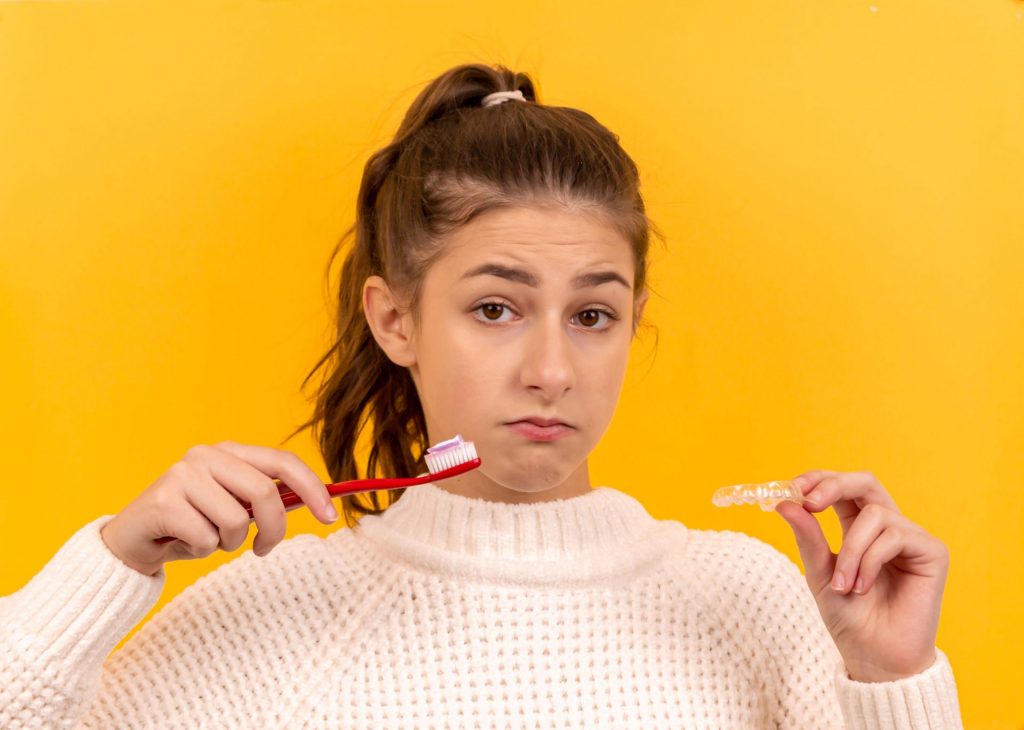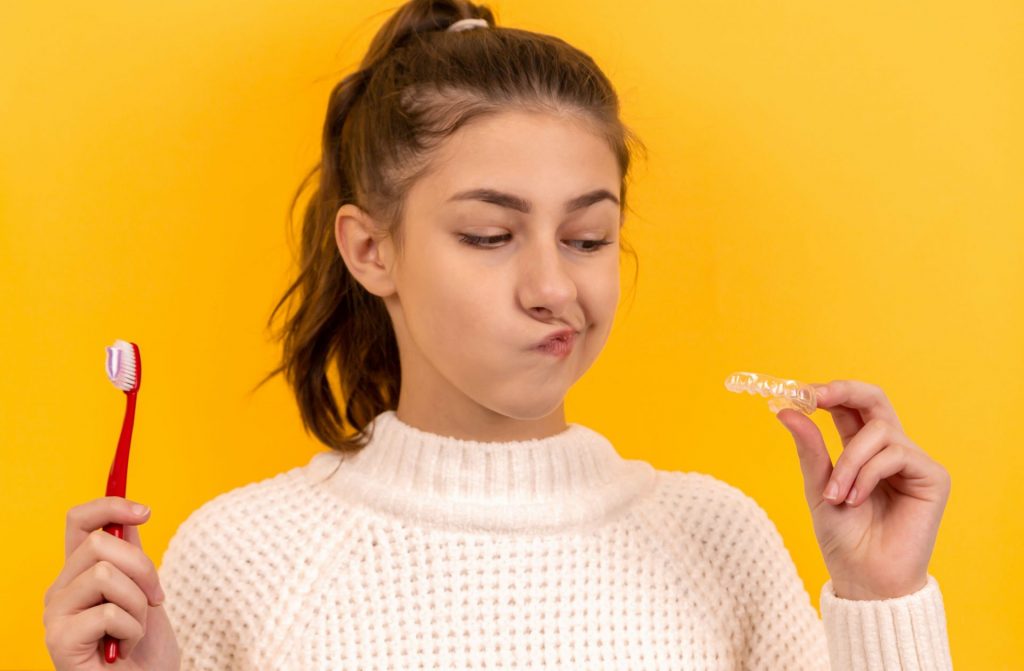
Taking Proper Care of Your Retainer
Introduction
Congratulations on completing your orthodontic treatment and achieving a beautifully aligned smile! Now that you’re entering the post-treatment phase, it’s essential to maintain the results and keep your teeth in their ideal positions. Your retainer plays a crucial role in preserving the hard work invested in your orthodontic journey. By wearing it consistently and following proper care guidelines, you can enjoy a confident and healthy smile for years to come. In this comprehensive guide by Petit Smiles, we will delve into the importance of retainers, different types available, and the best practices for maintaining and caring for them. Remember to follow us on Instagram for more,
The Importance of Retainers
After your braces or aligners are removed, your teeth may have a natural tendency to shift back to their original positions. This is called orthodontic relapse. Retainers prevent this relapse by holding your teeth in place and allowing the surrounding tissues to stabilize. Although your teeth are more likely to shift immediately after treatment, the risk of relapse persists throughout life. Wearing your retainer as prescribed by your orthodontist is crucial for maintaining the integrity of your smile.
Types of Retainers
Removable Retainers: These are the most common type of retainers, typically made of plastic or a combination of plastic and metal. They can be easily taken out for eating, brushing, and flossing, making them convenient to maintain. There are two main types of removable retainers:
a. Hawley Retainers: Hawley retainers consist of a plastic or acrylic base that sits against the roof of your mouth or along the bottom of your mouth, with a wire that wraps around the front of your teeth. The wire can be adjusted to ensure the retainer fits snugly and comfortably.
b. Essix Retainers: Essix retainers are clear, thin, and less noticeable than Hawley retainers. They fit over your teeth like a transparent shell, providing a discreet option for maintaining your smile.
Fixed Retainers: Also known as bonded or permanent retainers, these are thin wires that are attached to the back of your teeth using dental cement. Fixed retainers are not visible from the front and offer a seamless way to keep your teeth in place. They are usually recommended for the lower front teeth, where relapse is most common.

Tips for Caring for Your Retainer
Clean Your Retainer Regularly:
To maintain good oral hygiene and prolong the lifespan of your retainer, it’s essential to clean it regularly. Brush your retainer daily using a soft-bristled toothbrush and a mild, non-abrasive toothpaste. Be gentle, so as not to damage the retainer’s surface. Rinse it thoroughly with cool water after eating to remove any food debris.
Avoid Damaging Foods and Drinks:
Certain foods and drinks can be harmful to your retainer, causing warping or breakage. Avoid hot foods and beverages while wearing your retainer, as they can distort the retainer’s shape. Also, stay away from crunchy or sticky foods that could damage the retainer’s structure. Remove your retainer before eating and store it safely in its case.
Handle Your Retainer with Care:
Always handle your retainer with clean hands to prevent transferring dirt or bacteria. Use gentle and controlled movements when inserting or removing the retainer. Avoid bending or twisting it, as this can weaken the material and affect its fit over time.
Keep Your Retainer in Its Case:
When not wearing your retainer, store it safely in its case. Leaving it exposed on a napkin or a surface increases the risk of damage or loss. A sturdy retainer case protects your retainer from dirt, damage, and accidental mishaps.
Follow Your Orthodontist’s Wear Schedule:
Our Pediatric Denstists will provide specific instructions on how often to wear your retainer. In the beginning, you may need to wear it full-time and then transition to nighttime wear. Adhering to the prescribed wear schedule is essential for maintaining the results of your orthodontic treatment.
Attend Regular Dental Check-ups:
Regular visits to your dentist or orthodontist are crucial, even after completing your orthodontic treatment. During these visits, your retainer will be professionally cleaned, and your teeth will be evaluated to ensure they remain in their optimal positions. Any necessary adjustments or replacements can be made during these appointments.
| Recommendation | Description |
|---|---|
| Clean Your Retainer Regularly | Brush your retainer daily using a soft-bristled toothbrush and mild, non-abrasive toothpaste. Rinse it thoroughly with cool water after eating to remove food debris. |
| Avoid Damaging Foods and Drinks | Refrain from consuming hot foods and beverages while wearing your retainer, as they can cause warping. Avoid crunchy or sticky foods that could damage the retainer’s structure. Remove your retainer before eating. |
| Handle Your Retainer with Care | Always handle your retainer with clean hands to prevent transferring dirt or bacteria. Use gentle movements when inserting or removing it, and avoid bending or twisting the retainer to maintain its shape. |
| Keep Your Retainer in Its Case | Store your retainer safely in its case when not in use to protect it from dirt, damage, and loss. Avoid leaving it exposed on surfaces or wrapped in napkins. |
| Follow Your Orthodontist’s Wear Schedule | Adhere to the prescribed wear schedule provided by your orthodontist. Initially, you may need to wear it full-time and then transition to nighttime wear. Consistency is essential to maintain your smile’s alignment. |
| Attend Regular Dental Check-ups | Visit your dentist or orthodontist regularly for professional cleaning and evaluation of your retainer and teeth. They can make adjustments or replacements as needed to ensure optimal results. |

By following these recommendations, you can ensure that your retainer stays clean, functional, and effective in preserving your beautifully aligned smile.
Conclusion
Taking proper care of your retainer is vital for the long-term success of your orthodontic treatment. By following the guidelines provided in this comprehensive guide, you can ensure that your retainer remains clean, functional, and effective in keeping your smile straight and healthy. Remember to wear your retainer consistently, clean it regularly, handle it with care, and attend regular dental check-ups to enjoy the benefits of your hard-earned smile for a lifetime. Embrace this final phase of your orthodontic journey with diligence, and your beautiful smile will continue to shine brightly.
At Petit Smiles, we strive to provide the best dental care for infants, children, and adolescents in the Coral Gables and Doral area in Florida. Please feel free to contact us if you have any questions about your teen’s dental health.


